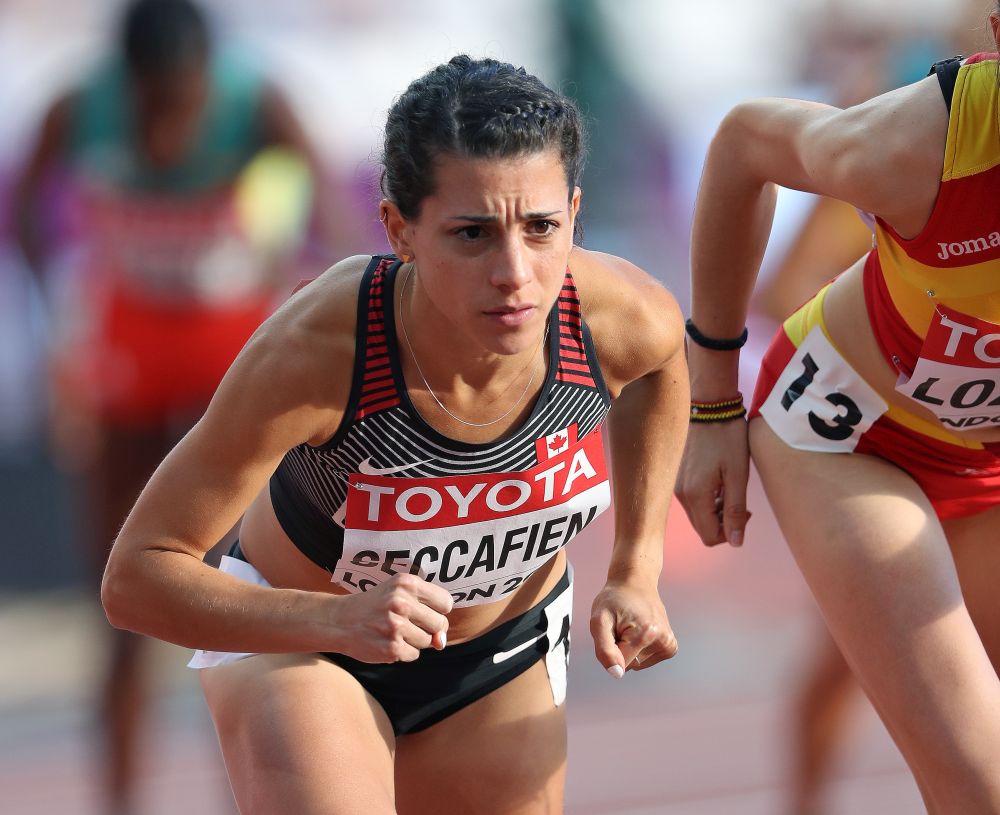Half-marathon training with Canadian record holder Andrea Seccafien
You might not be able to match Seccafien's national best of 1:09:38, but this track workout can help you secure a PB of your own
 Photo by:
Claus Andersen
Photo by:
Claus Andersen
It’s a new year, and many people have set running-specific goals for the coming months. If one of your objectives is to run a half-marathon this year, we’ve got the perfect workout for you, endorsed by Canadian Olympian Andrea Seccafien. Seccafien is the national half-marathon record holder (she owns a PB of 1:09:38), and while her focus is still on the track for the upcoming Tokyo Olympics, she definitely has what it takes to find sustained success on the roads whenever she decides to officially make the transition. Seccafien lives and trains in Melbourne, Australia, where she works as a coach with a training company called Purdue Performance, and the following workout is one of her favourites as she prepares for the half-marathon.
https://www.instagram.com/p/CJZbTAPndTa/?utm_source=ig_web_copy_link
Seccafien is a track athlete (she’s hoping to run the 5,000m-10,000m double in Tokyo), and so it’s to the track we go for this workout of 2K repeats. If you don’t have access to a track (some might be covered in snow and ice at the moment), map out 2K and 1K loops on the road and run there. The workout is 7 x 2K, plus an additional 1K to wrap things up.
RELATED: Andrea Seccafien’s moving up in distance
Before you get started on the hard stuff, Seccafien notes the importance of warming up properly. She says to run for at least 20 minutes, followed by drills and strides. “In the warmup, you’re just getting your body ready for the session,” she says. “Those drills will reinforce good technique and the strides will get you moving a bit quicker before the main set.”
Seccafien says to run three to five of these 2K repeats at half-marathon pace, starting a bit slower for the first couple and getting quicker from there. “The purpose of the workout is to get into that half-marathon pace,” she says. “Then you run the last 1K harder on tired legs, which will feel similar to the closing kilometres of a half-marathon.” Seccafien says to include active recovery in between each repeat, running one lap of the track (or around 400m of your road loop) before continuing with another hard 2K.
https://www.instagram.com/p/CIzOBe1HWxL/?utm_source=ig_web_copy_link
“It can be mentally draining running 2Ks on the track,” Seccafien says. “It’s good practice to do those laps and work on your focus, because that’ll be a valuable experience to have on race day.” After your 14K of 2K repeats, dig deep and try to hit 10K pace for that final 1K. It’ll be tough, but remind yourself that it’s your last hard effort of the day. Finding that extra gear and pushing through the pain and fatigue will only benefit you when you eventually get to race, and when you see the “1K to go” sign on the course, you’ll be able to think back to this workout and hammer down the home stretch.
RELATED: Canadian heptathlon champ Georgia Ellenwood’s 2-minute core routine
Finally, Seccafien says all that’s left is the cooldown, which, like the warmup, should be at least 20 minutes. “You just want to help your body recover and start the recovery process.”


